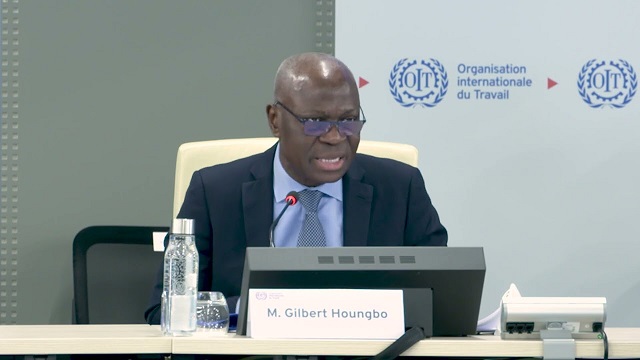
Geneva, Switzerland | Xinhua | The severe inflationary crisis combined with a global slowdown in economic growth are causing a striking fall in real monthly wages in many countries, reducing the purchasing power of the middle classes and hitting low-income households particularly hard, the International Labour Organization (ILO) said on Wednesday.
In its “Global Wage Report 2022-2023,” the ILO said that global monthly wages fell in real terms to minus 0.9 percent in the first half of 2022, the first time this century that real global wage growth has been negative.
According to the report, real wages in the Group of 20 (G20) countries in the first half of 2022 are estimated to have declined to minus 2.2 percent, whereas real wages in emerging G20 countries grew by 0.8 percent, 2.6 percent less than in 2019, the year before the COVID-19 pandemic.
“The multiple global crises we are facing have led to a decline in real wages. This has placed tens of millions of workers in a dire situation as they face increasing uncertainties,” ILO Director-General Gilbert F. Houngbo said.
“Income inequality and poverty will rise if the purchasing power of the lowest paid is not maintained. In addition, a much-needed post-pandemic recovery could be put at risk. This could fuel further social unrest across the world and undermine the goal of achieving prosperity and peace for all,” he commented.
The report, which includes regional and country data, shows that in Northern America (Canada and the United States), average real wage growth slid to zero in 2021 and dropped to minus 3.2 percent in the first half of 2022.
In the European Union, where job retention schemes and wage subsidies largely protected employment and wage levels during the pandemic, real wage growth increased to 1.3 percent in 2021 and declined to minus 2.4 percent in the first half of 2022.
In Eastern Europe, real wage growth slowed down to 4.0 percent in 2020 and 3.3 percent in 2021, and fell to minus 3.3 percent in the first half of 2022.
“We must place particular attention to workers at the middle and lower end of the pay scale. Fighting against the deterioration of real wages can help maintain economic growth, which in turn can help to recover the employment levels observed before the pandemic,” Rosalia Vazquez-Alvarez, one of the report’s authors, said.
 The Independent Uganda: You get the Truth we Pay the Price
The Independent Uganda: You get the Truth we Pay the Price



